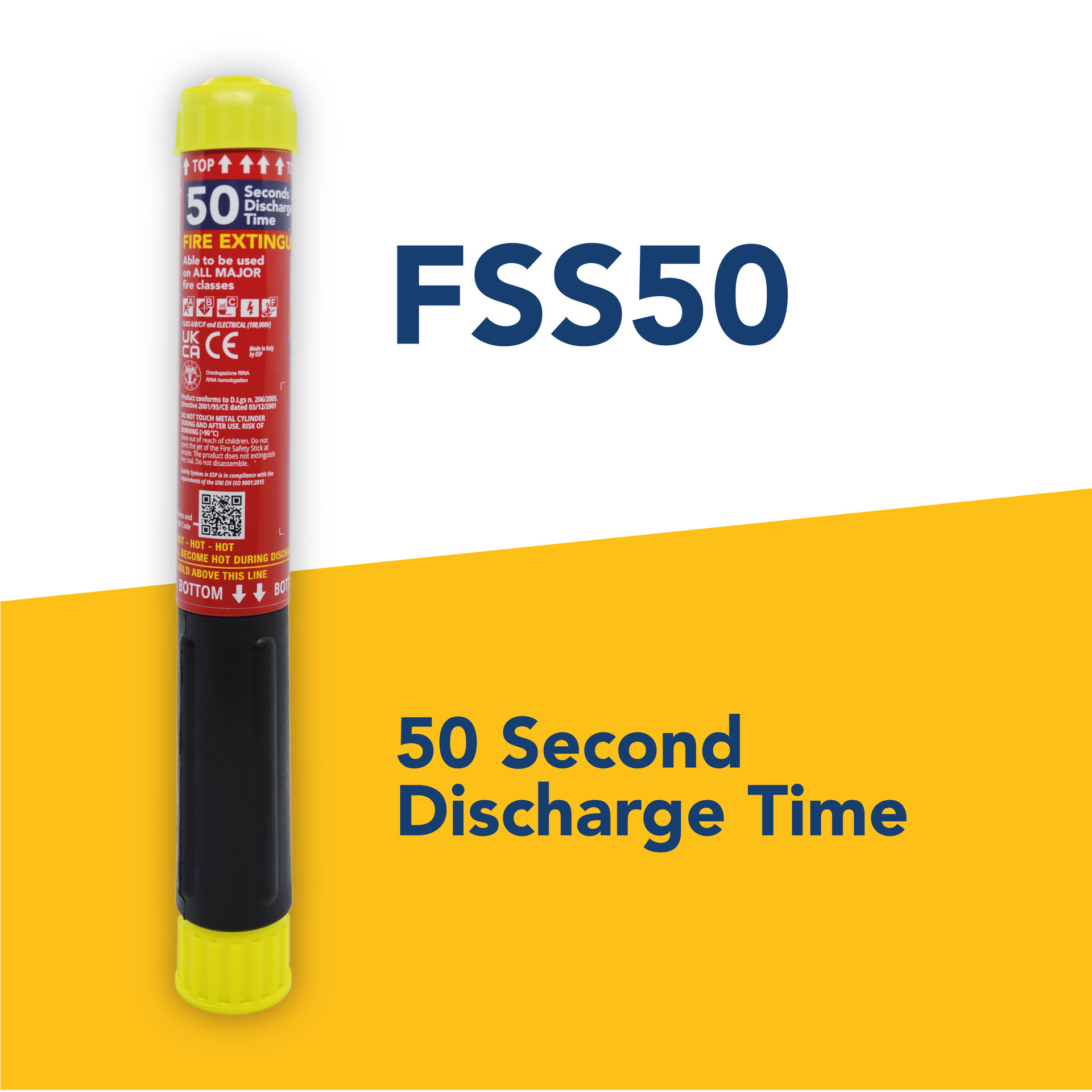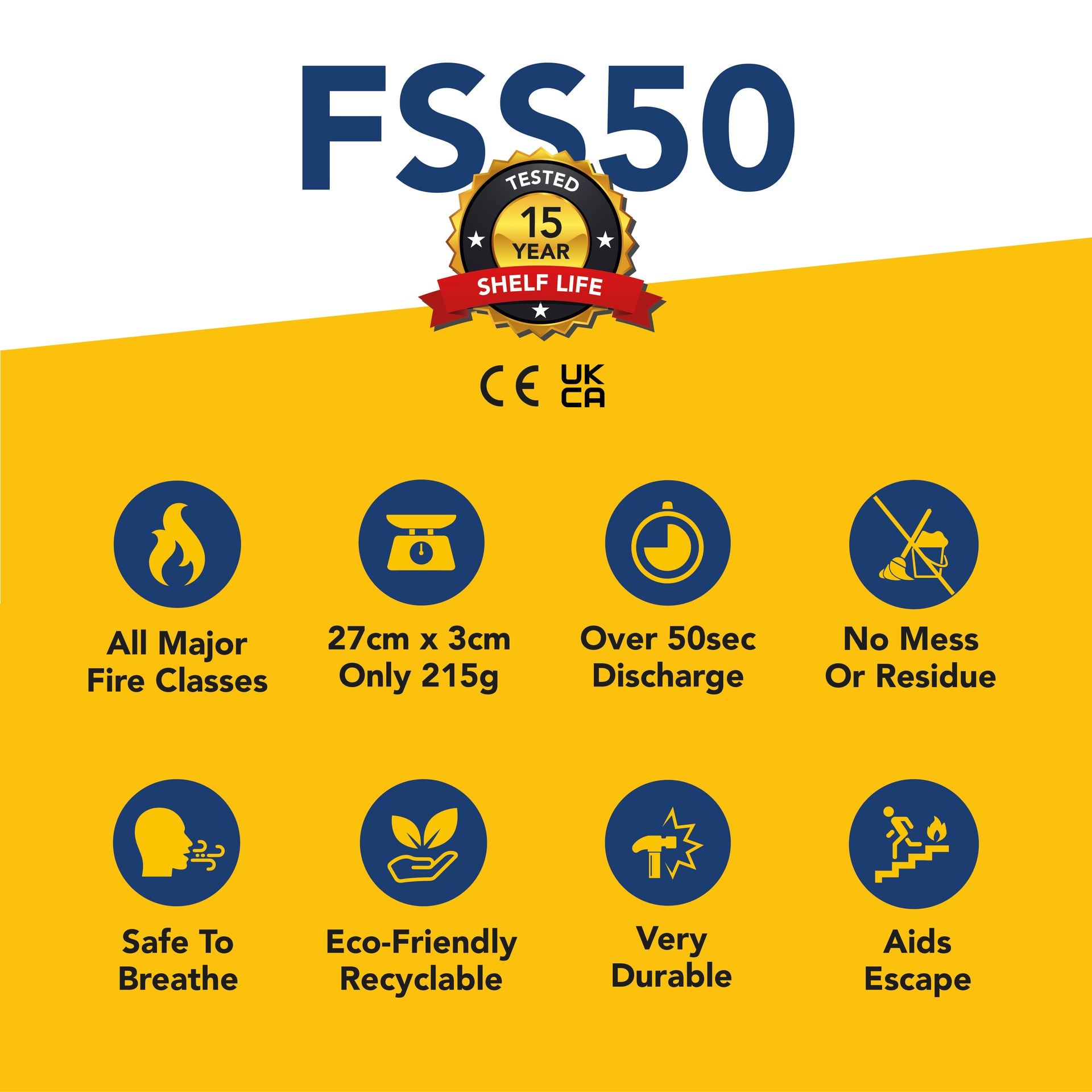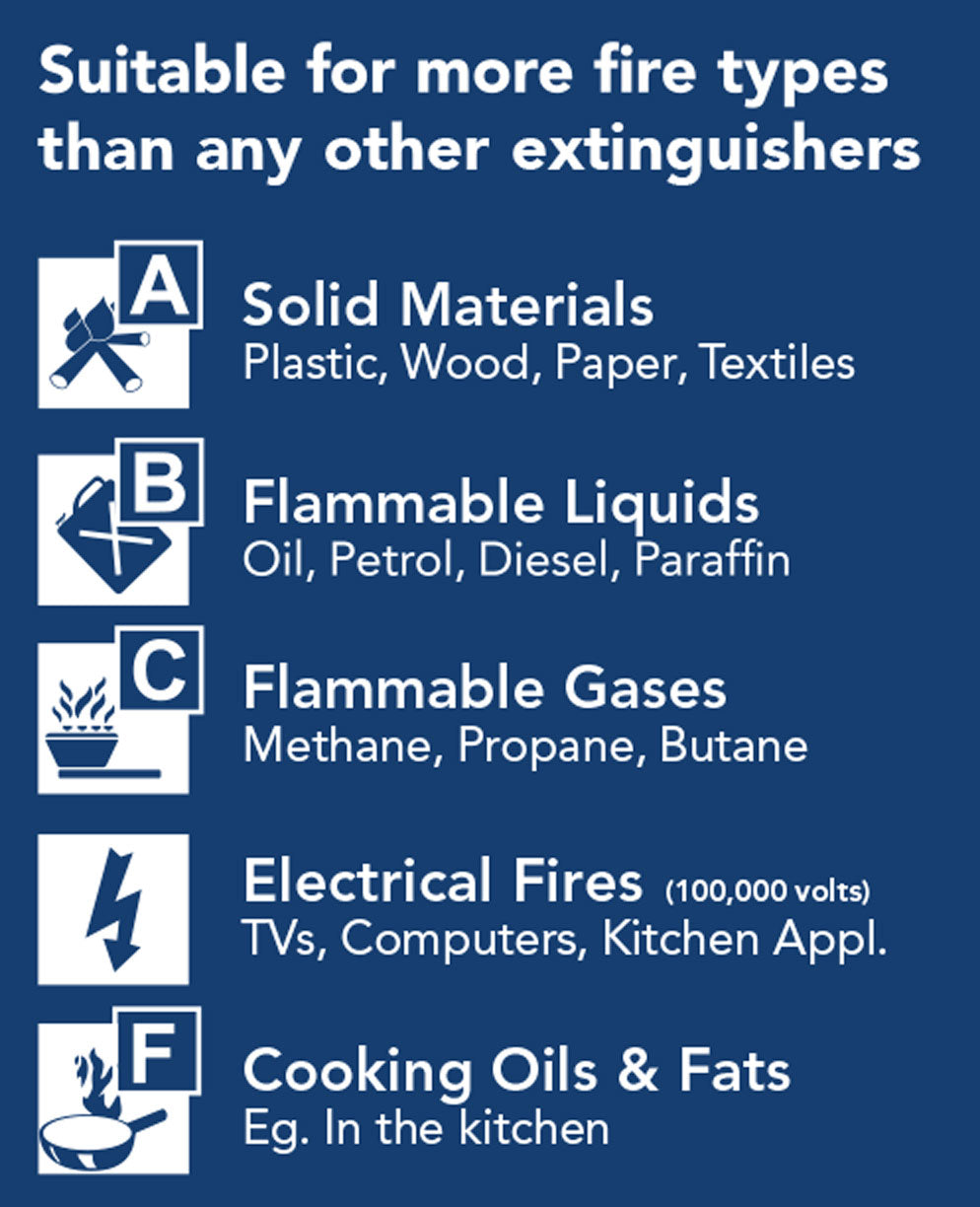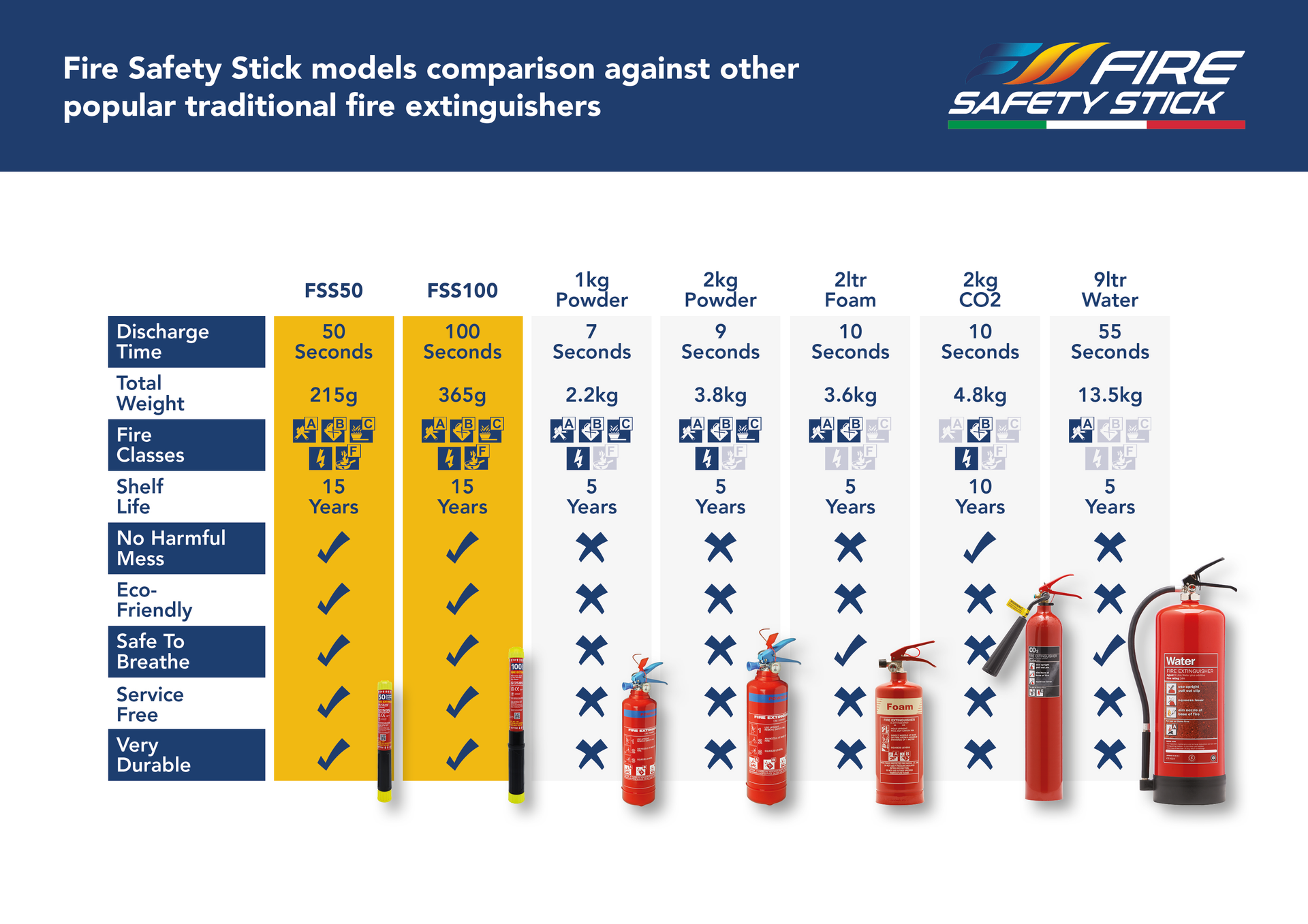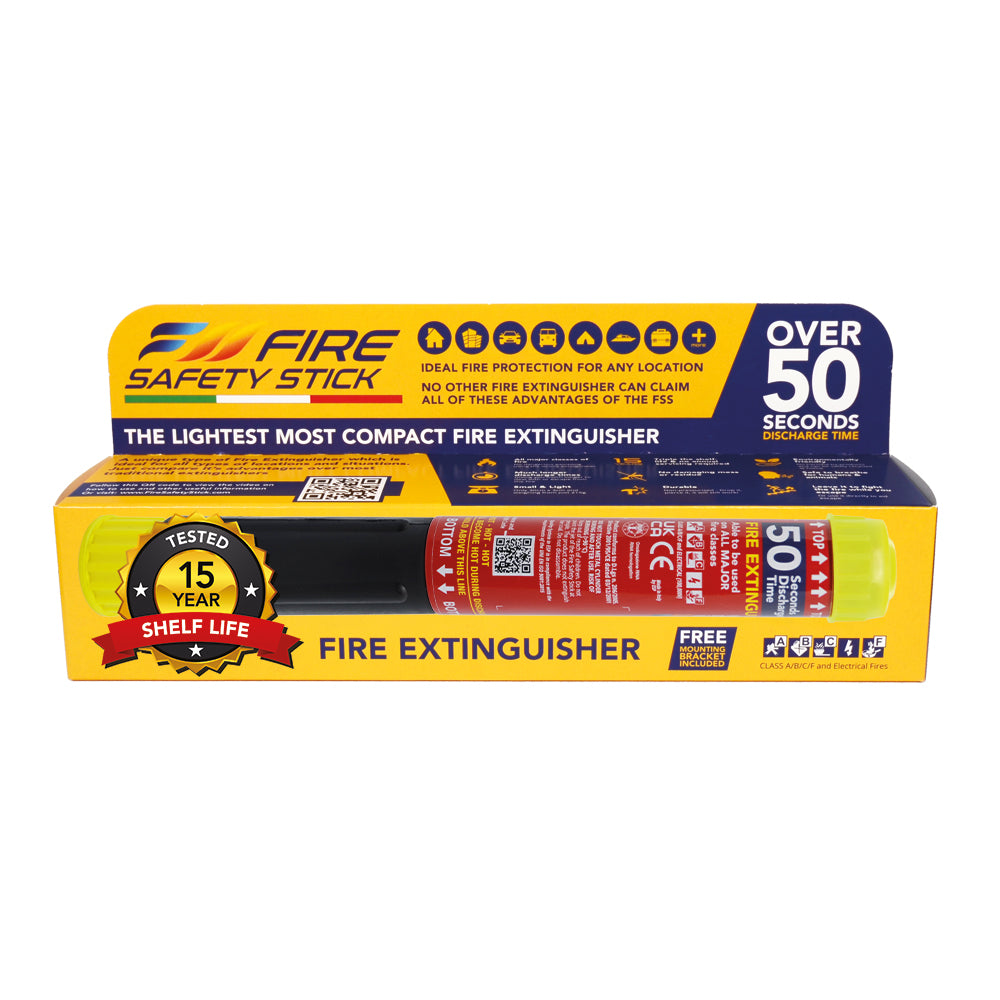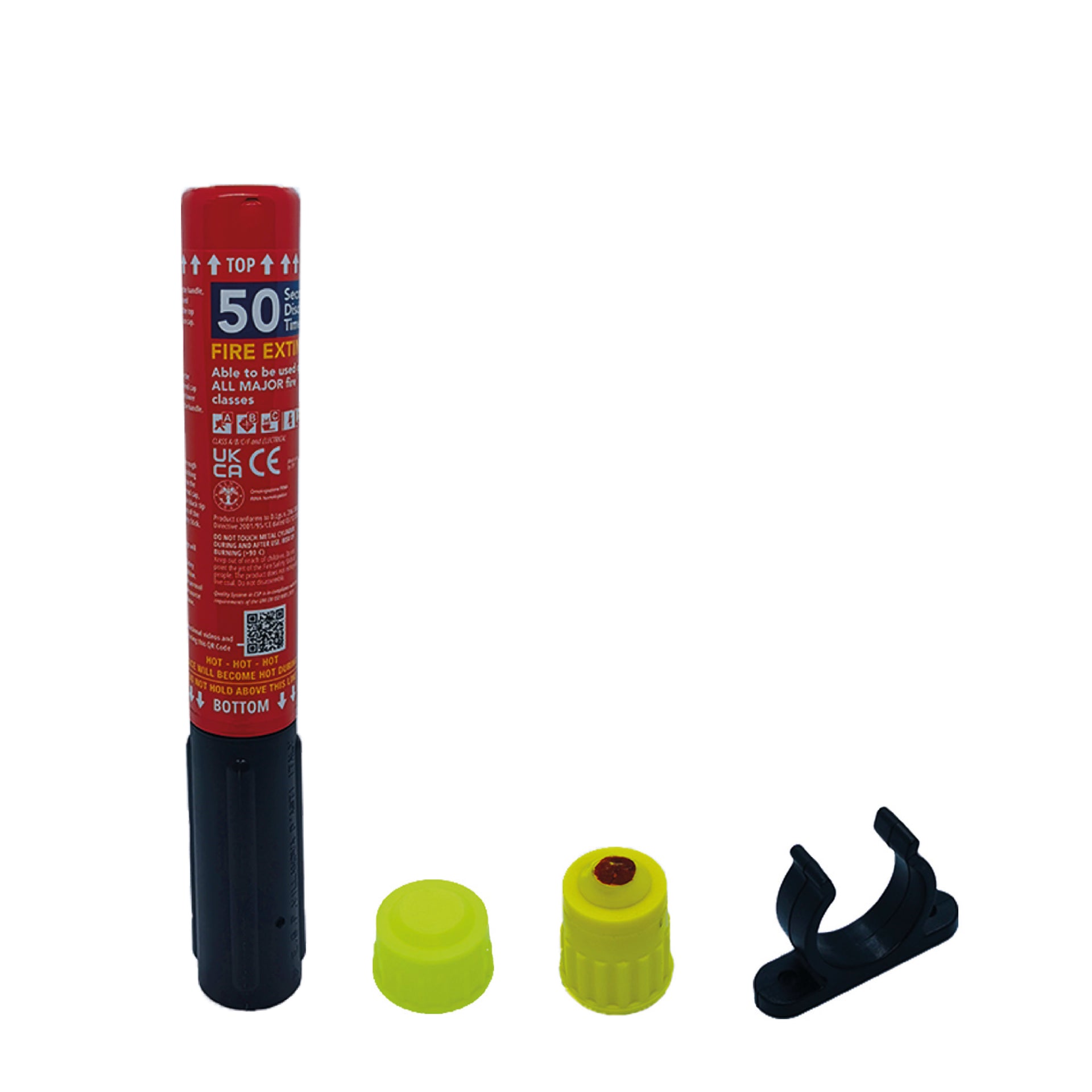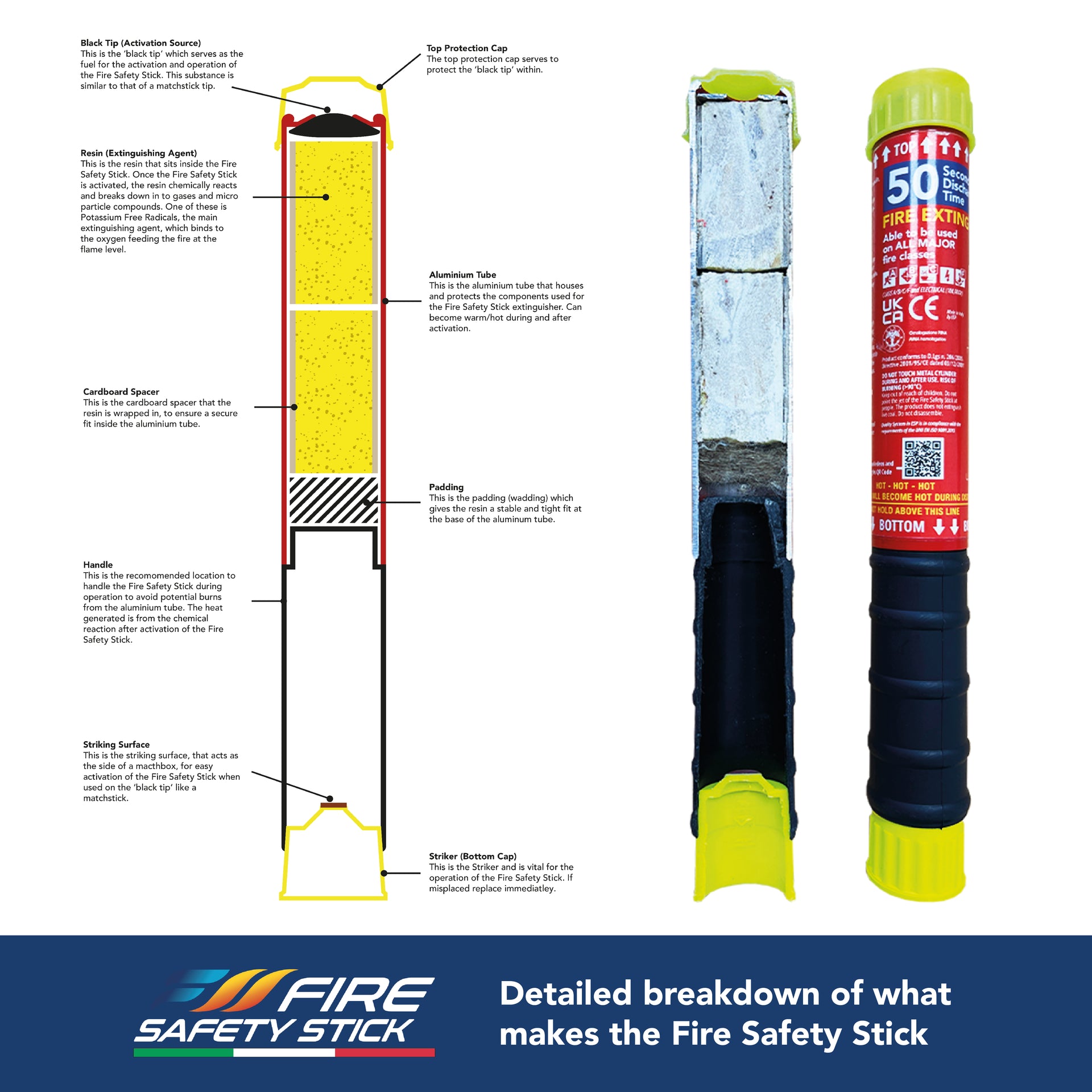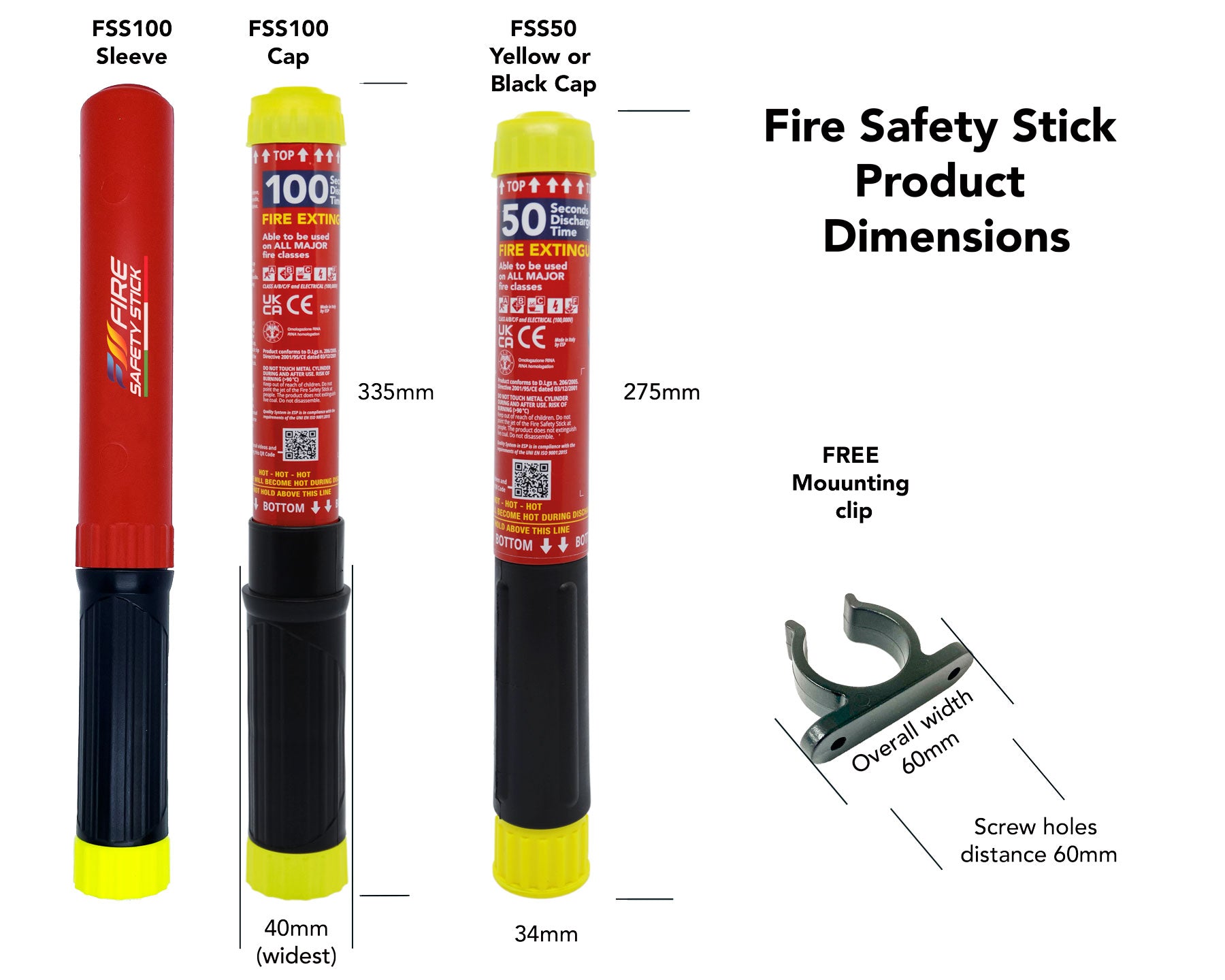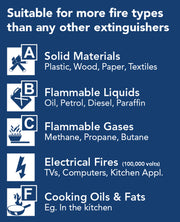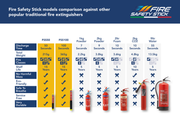Fire Safety Stick - 50 Seconds
Couldn't load pickup availability
Description
The Fire Safety Stick is a totally different and innovative fire extinguisher and has many advantages over traditional fire extinguishers such as dry powder. Firstly, it is incredibly light compared to heavy, bulky pressurised extinguishers and yet has a much, much longer discharge time. Because it is non-pressurised, it doesn’t need annual servicing by an external fire safety company, whereas all pressurised extinguishers do require annual servicing. We do however recommend regular simple visual inspections, but this can be done easily by the owner. Plus, with at least a 15-year shelf life, its life span is triple that of most others. It’s really durable too, drop it and it will not activate by accident.
How it works?
Uniquely, it works by chemically interfering with the oxygen of the flame but does not restrict the oxygen of the user at all. In fact, it is completely safe to use around humans and animals alike. It is completely clean, leaving no harmful, corrosive mess at all and is totally environmentally friendly, as well as being easy to recycle after use.
It is fully certified for more types of fire classes too, so there is no dangerous gambling checking to see if it is suitable to use on a particular fire (Including cooking oil and kitchen fat fires). The Fire Safety Stick will never make a fire worse. If the fire was too large in a confined space, you can simply activate it, leave it in the room while you escape to safety. It will continue to discharge its vapours, repressing the fire in your absence. It is this unique feature that means it can extinguish chimney fires, unlike other extinguishers on the market.
The Fire Safety Stick is manufactured in Italy and each one comes complete with a free mounting clip. Due to its many successes, it is established around the world under different brand names. Despite being relatively new, it is carried by many leading companies and organisations including many region fire brigades and police forces across the UK.
Fire Classes:
- Class A – Solid combustibles – e.g. paper, plastics, textiles, wood*
- Class B – Flammable liquids – e.g. petrol, diesel, oil, alcohols
- Class C – Flammable gases – e.g. methane, propane, butane
- Electrical (up to 100,000volts) – e.g. Electrical appliances, wiring, circuit boards
- Class F – Cooking oils and fats in the kitchen
*It is not suitable for BBQ coals or well-established burning logs as these are burning from within.
Key Facts
- 50 second min discharge time (also available in 100 seconds)
- Leaves no corrosive mess or residue (Unlike most other extinguishers)
- 15-year minimum shelf life
- Needs no servicing.
- Safe to breathe for humans and animals.
- Environmentally friendly
- Fully recyclable
- Non-pressurised
- Incredibly durable – will not activate by accident.
- Can be left activated in a confined space to repress the fire.
- Able to extinguish chimney fires.
- Free Mounting clip included.
- Made in Italy

